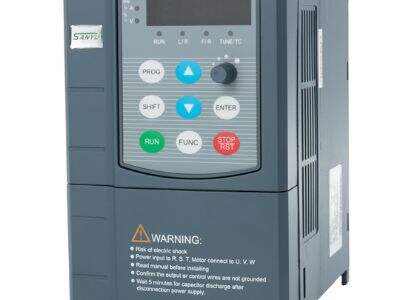Long ago, in the universe of factories and machines, lived a wonderful device - the servo system. This invention, in its application today across many different fields, has enormously simplified our lives. The company is one of the best manufacturers of the servo system and has worked hard to make this invention evolve and move ahead. This article will give you an overview of what servo systems are, how they work, and why they are so critical for factories and automation.
An Introduction to Servo Systems
Imagine a robot that can walk perfectly and do exactly whatever it is told to do. A huge part of that robot is the servo system. The servo system makes the robot to move exactly whatever the instructions are. And also, everything is coordinated with the help of special tools like sensors and a controller, so everything goes as planned. They are special electronic devices that can move small distances very accurately. That is what set it apart from other kind of motors.
What is a Servo System A servo system employs feedback sensors to maintain precision in its motion. Suppose you want a robot's arm to move two inches to the left — sensors in the servo system signal the motor to make sure that the motor moves the arm exactly that distance. This is the basic concept behind how servo technology works! In many different jobs, having robots and machines complete tasks correctly is critical.
How Servo Motors Work
Without the field devices, the power source of the servo system, the whole system cannot work. These are in fact the motors that hold the servo system together. Motorized to move very accurate and immediately adjust their movement according to what is needed from the system, these engines come in a variety of sizes and can be used on all sorts of jobs.
Servo motors also operate in conjunction with another fundamental component known as a servo drive that serves as a motor controller. That is to say, literally, the servo drive instructs the motor on how it should behave and move about. Clearly, it is crucial that the servo system ensure that the proper movements are indeed executed by the motor and the actual driving of the motor, in harmony. It is this harmony, thus, that enables machines to realistically execute complex operations satisfactorily and-critically-safely.
Why Servo Systems are Inherently Important to Factories
Servo systems have revolutionized factories with efficiency, speed, and safety. Traditionally, however, in the past, machines used to work with big motors which revolved at very high speeds, which posed a possible danger to nearby workers. This made the motion of machines not well controlled and safe until servo systems were introduced. This enables the worker to do his job without any risk of injury.
Servo technology also reduces the cycle time and hence the production cost. These innovations allow the companies in all sectors to manufacture more in less time, resulting in more money earned. The above reasons are why today servo systems have become the integral part of many factory and industrial processes.
Parts of a Servo System
The four main parts of servo system are motor, drive, controller, feedback sensor, and the load. Don't worry, it is nothing new; in fact, each one part is very well known and at the end, after all of them make work the system. The motor can be either AC (alternating current) or DC (direct current). The drive is the controller that views the operation of the motor, according to the application.
The only unique function of the controller is it converts input commands into signals the servo motor processes and uses. The feedback sensor is fitted to the servo motor so that the movement of the servo motor is accurate. The last part of the servo motor is load, which refers to the object or thing the servo motor works on.
Servosystem- The servosystem is designed in such a manner that the stepper motor could be controlled. Every setup is configured differently and related to some particular application or job. Proper selection of the configuration holds great importance to ensure that the servo system works with good efficiency and effectiveness.
Sensorless Direction Detection on a Servo System
Given that servos are precise machines, proper integration and maintenance are very essential to ensure proper performance of your servo system. Integration is the process of bringing things together in a systematic way so all pieces function harmoniously with one another. The setup requires patience because the system is calibrated to work at the best of its range.
The care of the system also goes a long way to serve for the long run. The service must include inspection for all the components, replacement for all the worn or damaged parts, and adjustment to any out-of-tolerance parts. All this will enable your servo system to be more robust, and it is going to last longer.
In simpler terms, servo system is the electronic equipment intended to control machines and robots to make precise movements. Strong technology of SANYU might be able to upgrade a servo system later on. You should understand how servo systems work, how servo motors and the servo drives integrate, and how the different parts of a servo system function as a whole. Spring cleaning also ensures that the system is installed correctly and maintained so it runs more efficiently and lasts longer. That being said, the invention of servo systems has made factories infinitely more efficient — and safer working environments!

 EN
EN
 AR
AR
 BG
BG
 HR
HR
 CS
CS
 DA
DA
 NL
NL
 FI
FI
 FR
FR
 DE
DE
 EL
EL
 HI
HI
 IT
IT
 JA
JA
 KO
KO
 NO
NO
 PL
PL
 PT
PT
 RO
RO
 RU
RU
 ES
ES
 SV
SV
 CA
CA
 TL
TL
 IW
IW
 ID
ID
 LV
LV
 LT
LT
 SR
SR
 SK
SK
 SL
SL
 UK
UK
 VI
VI
 SQ
SQ
 GL
GL
 HU
HU
 MT
MT
 TH
TH
 TR
TR
 MS
MS


